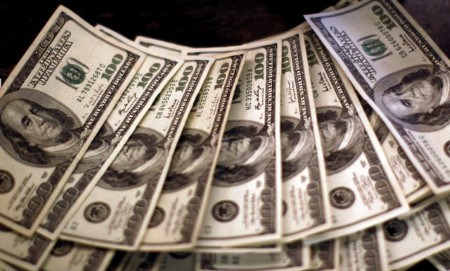




Philippines Trade Update: Exports momentum continues
 DOWNLOAD
DOWNLOAD

Quarterly Economic Growth Release: More BSP cuts to come
 DOWNLOAD
DOWNLOAD

Monthly Economic Update: Fed catches up
 DOWNLOAD
DOWNLOAD


US yields fall after Fed continues to flag easing, slows balance sheet runoff

NEW YORK – US Treasury yields pulled back on Wednesday after the Federal Reserve kept interest rates steady, as expected, but signaled that it still plans to cut interest rates at some point.
The Fed did acknowledge its disappointment over the “lack of further progress” in pushing inflation down to its 2% target.
The Federal Open Market Committee “does not expect it will be appropriate to reduce the target range until it has gained greater confidence that inflation is moving sustainably towards 2%,” the Fed said in a unanimously approved statement that still suggested that the next move on rates will be lower.
A big surprise for the market was the larger-than-expected reduction in balance sheet runoff under the Fed’s quantitative tightening program. This also helped push US yields lower.
The Fed said starting on June 1 it was reducing the cap on Treasury securities it allows to mature and not be replaced to USD 25 billion from its current limit of up to USD 60 billion per month.
The US central bank, however, left the cap on for mortgage-backed securities at USD 35 billion per month, and it will reinvest any excess MBS principal payments into Treasuries.
“The decision to hold rates steady was no surprise, but the aggressive moderation in tapering, reducing the Fed’s balance sheet, was a bit of a surprise, and modestly bullish for bonds at the margin because it means that the Fed will allow less supply of bonds to hit the market off of its balance sheet,” said Michael Rosen, chief investment officer, at Angeles Investment Advisors in Santa Monica, California.
Slowing the pace of exit from QT would mean the Treasury’s financing needs would decline because it no longer needs to borrow as much to cover the Fed’s redemptions.
Under QT, the Treasury’s borrowing needs effectively increase amid a series of operations. When the bond the Fed holds hits maturity, the Treasury redeems the bond and pays the Fed by subtracting the required amount from the cash balance it keeps on deposit with the Fed.
In order to replace the cash it paid the Fed, the Treasury needs to sell new securities.
Now that the Fed is slowing QT, there is less need to borrow to pay the Fed for the bond redemptions, said Tom Simons, US economist at Jefferies in New York.
“Going forward, these redemptions are at a slower pace and there’s more rollover coming from the Fed so there’s much less that they need to borrow from the market,” he added.
In afternoon trading, the benchmark 10-year yield fell 4.5 basis points to 4.638%.
US two-year yields slid 8.2 bps to 4.96%.
Fed Chair Jerome Powell, in his press briefing after the statement, was less hawkish than the market expected. He practically ruled out a rate hike.
Following the Fed statement and Powell’s briefing, US rate futures on Wednesday have priced in a 66.4% chance of a rate cut in November, compared with 58% late on Tuesday, according to CME’s FedWatch tool. It was more or less 50% in September and about 80% in December.
(Reporting by Gertrude Chavez-Dreyfuss in New York; Additional reporting by Carolina Mandl and Laura Matthews in New York; Editing by Kirsten Donovan, Cynthia Osterman and Matthew Lewis)
This article originally appeared on reuters.com





 By Reuters
By Reuters